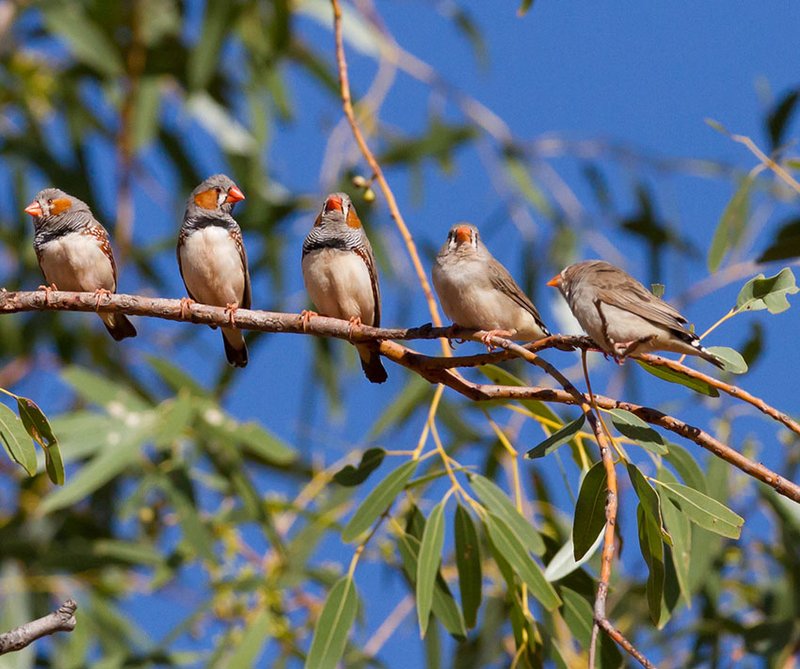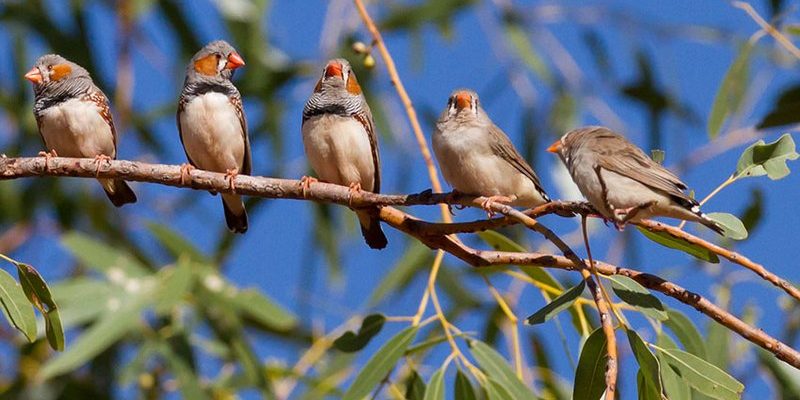
So, why should we care about conserving zebra finches? Well, for starters, they’re fascinating creatures that can teach us about resilience and adaptation. Plus, they contribute to the biodiversity of their habitats. In this article, we’ll dive into the various conservation efforts aimed at protecting these vibrant birds. We’ll explore everything from habitat restoration to community involvement, showcasing how individuals and organizations are stepping up to ensure that zebra finches continue to thrive.
Understanding the Zebra Finch and Its Habitat
Before we jump into conservation efforts, let’s take a moment to understand what makes zebra finches unique. These small birds, about 4.7 inches in length, are known for their striking appearance. The males typically flaunt bright orange cheeks and a bold black-and-white striped pattern, while females are more muted in color. This difference is essential; it plays a big role in their mating rituals, which are quite intricate and fascinating.
Zebra finches thrive in Australia’s arid and semi-arid regions, often found near water sources like rivers and wetlands. Here’s the thing: they need specific types of environments to nest and forage. They prefer grassy areas where they can find seeds, insects, and other food sources. Unfortunately, as humans continue to build and expand, these habitats are rapidly disappearing, leading to a decline in zebra finch populations.
Challenges Facing Zebra Finches
Now that we know a bit about these delightful birds, let’s talk about some of the challenges they face. One of the biggest threats is habitat loss. As urban areas expand, zebra finches lose their nesting sites and food sources. Imagine moving to a new city and finding that your favorite park or café has vanished—that’s what zebra finches experience when their habitats are destroyed.
Another significant challenge comes from climate change. Changes in temperature and rainfall patterns can disrupt the delicate balance of their ecosystems. For example, droughts can reduce the availability of food, making it harder for zebra finches to survive and reproduce.
Lastly, invasive species pose another threat. Predators like cats can quickly diminish their populations. When these external pressures combine, it creates a perfect storm that can jeopardize their future.
Habitat Restoration Initiatives
One of the primary conservation strategies for zebra finches involves habitat restoration. This process includes replanting native vegetation and removing invasive species to help rebuild healthy ecosystems. Various organizations and local communities are getting involved in these initiatives, recognizing the urgent need for action.
For instance, programs in Australia have focused on restoring wetlands and grasslands. This is not just good for zebra finches; it helps many other species that rely on these habitats as well. It’s like hosting a big family reunion where everyone—from the tiniest insects to larger birds—benefits from a clean and healthy home.
In addition to physical restoration, community education is vital. By informing local populations about the significance of these habitats, they can become stewards of their environment, helping to protect the zebra finch’s home.
Community Involvement and Education
Speaking of community, local engagement is a game-changer when it comes to conservation efforts. Many successful projects rely on volunteers who are passionate about wildlife preservation. Schools, wildlife organizations, and community groups often team up to create informative events and hands-on activities that raise awareness about zebra finches.
For example, birdwatching clubs often schedule trips where participants can observe zebra finches in their natural habitats. These outings can foster a deeper appreciation for the birds and inspire individuals to take action.
Here’s the thing: when people feel connected to nature, they’re more likely to support conservation efforts. Whether it’s through social media campaigns or community clean-up days, every little bit helps. By working together, communities can amplify their impact and create a lasting positive change for zebra finches.
Research and Monitoring
Another crucial aspect of protecting zebra finches is ongoing research and monitoring. Scientists and conservationists keep a close eye on populations to understand their behaviors, breeding patterns, and the impacts of environmental changes. This information is invaluable for shaping effective conservation strategies.
Bird banding is one method used to track zebra finches. By attaching small bands to their legs, researchers can monitor their movements and health over time. This data helps in understanding population trends and detecting any signs of decline early on.
Additionally, new technologies like drones and camera traps are being utilized to survey habitats without disturbing the birds. This tech-savvy approach allows for more efficient data collection and better insights into the challenges zebra finches face in their environments.
Legislation and Policy Changes
Finally, effective conservation efforts often hinge on important legislation and policy changes. Governments and organizations are beginning to recognize the need for legal protections for zebra finches and their habitats. This might include creating protected areas where development is restricted or enforcing regulations on land use.
Policies that promote sustainable practices in agriculture and urban development can also play a significant role. By encouraging landowners to adopt eco-friendly techniques—like maintaining native plants or creating bird-friendly spaces—we can help support the zebra finch population.
You might be wondering how you can help on a personal level. Supporting policies that prioritize conservation and voting for representatives who prioritize environmental issues can make a difference. Every little action counts when it comes to protecting these enchanting songbirds.
In conclusion, the conservation efforts aimed at protecting the zebra finch are a reflection of our commitment to preserving biodiversity. From habitat restoration and community involvement to research and legislation, numerous avenues are being explored to help these unique birds thrive.
As we learn more about the challenges zebra finches face, we can be inspired to take action in our own lives. Whether it’s participating in local conservation events or advocating for policies that protect their habitats, we each play a role in the future of these delightful little creatures. So, let’s join hands and ensure that the beautiful song of the zebra finch continues to echo through the Australian landscapes for generations to come.

